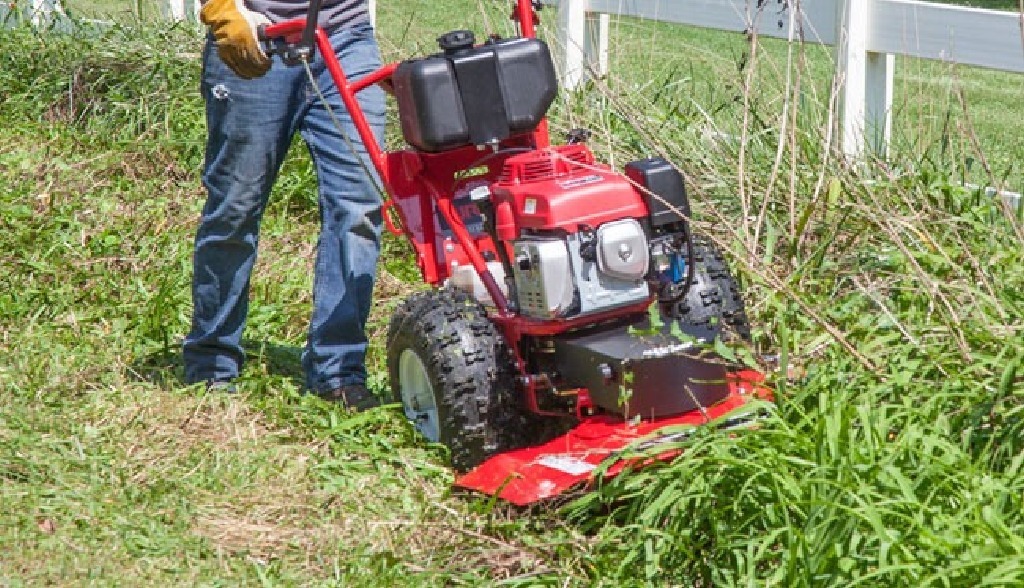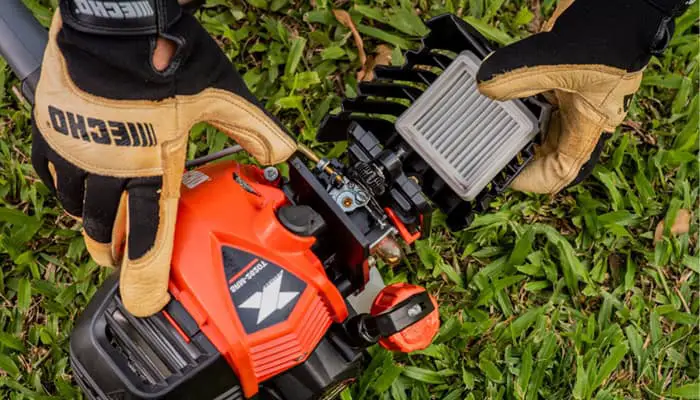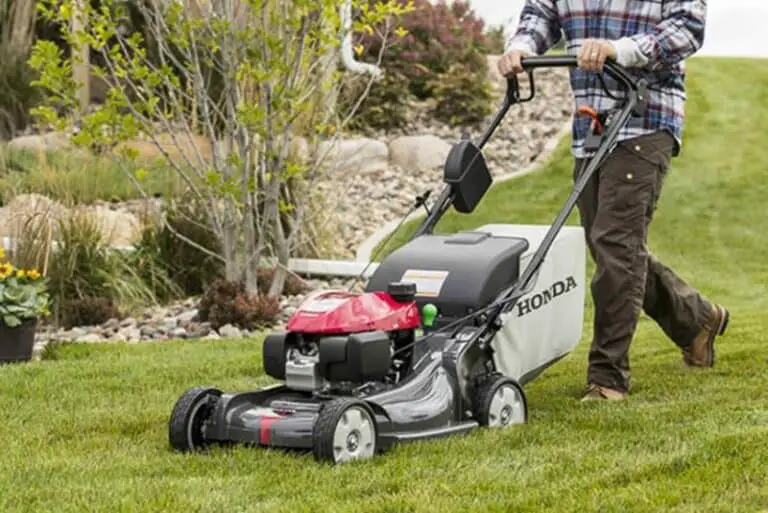Brush Cutter Safety Tips: How To Operate a Brush Cutter Safely

If you’re managing a property with trees and vegetation, you may have considered using a brush cutter. These powerful tools can make quick work of thick weeds, underbrush, and overgrown grass.
However, it’s important to remember that brush cutters can be dangerous if not used properly. Every year, many people are injured while operating brush cutters. That’s why it’s crucial to understand the proper safety precautions before using one.
In this article, we’ll go over some of the most important brush cutter safety tips. We’ll cover everything from choosing the right protective gear to using the tool safely and effectively.
Whether you’re a seasoned brush cutter operator or just getting started, these tips will help you stay safe while getting the job done. So grab your brush cutter and let’s get started!
The Importance of Brush Cutter Safety
Brush cutters are powerful tools that can make forestry management tasks easier and more efficient. However, they can also be dangerous if not used properly.
Therefore, it’s important to prioritize brush cutter safety when using these tools. When using a brush cutter, there are a few important safety steps that should be taken to keep from getting hurt.
When using a brush cutter, the most important thing is to wear the right safety gear. This includes gloves, eye protection, and ear protection. Also, you should wear sturdy shoes with closed toes to protect your feet from flying objects.
When using a brush cutter, it’s also important to dress appropriately for the weather and the task at hand. For example, if you’re working in hot weather, you’ll need to wear lightweight, breathable clothing to prevent overheating.
Another important safety measure is to ensure that the brush cutter is in good working order before using it. This means checking the tool for any damage or defects, and ensuring that all safety features such as guards and shields are in place and functioning properly.
You should pay attention to reading and following the manufacturer’s instructions for use and maintenance of the brush cutter.
Finally, it’s important to use the brush cutter in a safe and responsible manner. This means never pointing the tool at another person or using it in an unsafe manner.
Also, it’s important to be aware of your surroundings and any possible dangers in the area where you’ll be using the brush cutter. For example, if there are rocks or other hard objects in the area, you’ll need to take extra care to avoid hitting them with the tool.
Safety Equipment (PPE) Required To Operate a Brush Cutter
Brush cutters are powerful machines that can put your health and safety at risk if you don’t know how to use them safely. To reduce the risk of getting hurt while using a brush cutter, it is important to wear the right safety gear.
Eye and ear protection, gloves, sturdy shoes, and a full-face helmet are the most important safety gear you’ll need to use a brush cutter.
When using a brush cutter, it’s important to wear eye protection because debris, dust, and other small things can fly up and hit your eyes. Ear protection, such as earplugs or earmuffs, is also important, as brush cutters can be very loud and can cause permanent hearing damage over time.
Gloves are needed to protect your hands from cuts and scrapes caused by the brush cutter blades, and sturdy shoes can help keep you from getting hurt if you slip or trip on rough terrain. A full-face helmet with a visor will also help protect your face from flying debris and other hazards.
In addition to these important safety items, you should also wear clothes that cover your whole body, such as long pants and sleeves. This will help protect your skin from cuts, scrapes, and insect bites while working in the brush. By wearing the right safety gear, you can reduce the chance of getting hurt and use a brush cutter in a safe and effective way.
How To Inspect and Maintain a Brush Cutter for Safe Operation

It is important to inspect and maintain a brush cutter regularly to make sure it is safe to use. This can help keep accidents from happening and make sure the machine works as well as it can. Here are some key steps to inspect and maintain a brush cutter:
- Check the Blades: The blades are the most crucial part of a brush cutter. They should be sharp and free from damage, rust, or cracks. Dull blades can cause the machine to vibrate excessively, leading to fatigue and injury. Replace the blades if they are damaged or worn out.
- Check the Engine: The engine should be free from leaks, and the air filter and spark plug should be clean. A dirty air filter or spark plug can cause the engine to overheat, reducing performance and increasing the risk of fire. Make sure that the engine oil and fuel are at the right levels and have not exceeded their expiration dates.
- Check the Handle: The handle of the brush cutter should be secure, free from cracks, and adjustable to the operator’s height. Loose handles can cause the machine to lose control and lead to injury. Check that all nuts, bolts, and screws are tight and in good condition.
- Lubricate the Moving Parts: The moving parts of a brush cutter, such as the throttle and cable, should be well lubricated. This can help reduce friction and prevent damage to the machine.
By following these simple steps, you can ensure that your brush cutter is safe to operate and operates efficiently. It is also important to follow the manufacturer’s instructions for maintenance and operation to minimize the risk of accidents and injury.
The Importance of Proper Brush Cutter Operation Techniques
Brush cutters are powerful tools that can be used for a variety of forestry management tasks, such as clearing underbrush, trimming trees, and cutting through thick vegetation.
However, it’s important to use these tools properly to ensure their safe and efficient operation. By following proper brush cutter operation techniques, you can maximize the effectiveness of the tool while minimizing the risk of injury.
One important aspect of proper brush cutter operation is to use the tool at the correct speed and power setting for the task at hand. For example, if you’re clearing underbrush, you may need to use a lower power setting to avoid damaging nearby trees or other plants.
On the other hand, if you’re cutting through thick vegetation, you may need to use a higher power setting to ensure that the tool can effectively cut through the vegetation.
Another important aspect of proper brush cutter operation is to maintain the correct posture and grip on the tool. This means standing with your feet shoulder-width apart and keeping your body in a stable, upright position. You should also hold the tool firmly with both hands, and avoid using excessive force when cutting through vegetation.
By maintaining proper posture and grip on the tool, you can reduce the risk of injury and improve the accuracy of your cuts.
Finally, it’s important to be aware of any potential hazards in the area where you’ll be using the brush cutter. This means scanning the area for rocks, stumps, or other hard objects that could damage the tool or cause injury. It’s also important to be aware of any uneven terrain or obstacles that could cause you to lose your balance while using the tool.
Common Brush Cutter Safety Hazards and How To Avoid Them
Brush cutters are incredibly useful for clearing land and managing vegetation, but they can also pose certain risks if not handled with care. When using a brush cutter, it’s important to be aware of common safety risks, just like when using any other heavy machinery.
- Flying debris is a common danger that can hurt the operator and anyone else nearby very badly. To protect your eyes and face from flying objects, you must wear the right safety gear, like a face shield or safety goggles.
- Another common hazard is the risk of getting caught in the machinery. Loose clothing, jewelry, and long hair can all get caught in the moving parts of a brush cutter, which could cause serious injuries or even death. To avoid this hazard, it’s important to wear fitted clothing and tie back any loose hair. Avoid wearing jewelry or other accessories that could get caught in the machinery.
- The brush cutter’s sharp blades can also cause injury if not handled correctly. Make sure to follow all safety instructions and keep your hands and feet away from the blades while the machine is in operation. Before you try to fix or maintain the brush cutter, you should always turn it off and wait for the blades to stop moving. By being aware of these common dangers and taking the right steps to avoid them, you can use a brush cutter safely and avoid getting hurt.
Tips for Training and Educating Brush Cutter Operators on Safety Practices
The people who use brush cutters need to be trained and taught about safety so that they can use them safely and effectively. Here are some tips for training and educating brush cutter operators on safety practices:
- Provide clear and concise training materials. The first step in training people to use brush cutters is to give them clear and concise training materials that cover all of the important safety practices. This could include written materials such as manuals, safety guides, or operating procedures, as well as video tutorials or live demonstrations. It’s important that the training materials are easy to understand and cover all of the important safety practices.
- Emphasize the importance of safety. During the training process, it’s important to emphasize the importance of safety and the potential risks associated with using a brush cutter. This will help to motivate operators to take safety seriously and follow all of the recommended safety practices.
- Provide hands-on training. In addition to providing written materials and demonstrations, it’s important to provide hands-on training for brush cutter operators. This could involve having operators practice using the tool in a controlled environment, such as a training center or workshop. Hands-on training allows operators to get a feel for the tool and develop the skills necessary to use it safely and effectively.
- Conduct regular refresher courses. Training is not a one-time event, but an ongoing process. To ensure that brush cutter operators stay up-to-date on safety practices, it’s important to conduct regular refresher courses. This could involve providing additional training materials, demonstrations, or hands-on training sessions.
In conclusion, brush cutter operators need to be trained and educated on safety practices to make sure they can use these tools safely and effectively. This means giving training materials that are clear and to the point, putting an emphasis on safety, giving hands-on training, and giving regular refresher courses.
If you follow these tips, you can help make sure that people who use brush cutters have the knowledge and skills they need to do so safely and effectively.
Conclusion and Final Thoughts on Brush Cutter Safety
To sum up, if you want to avoid accidents and injuries while using a brush cutter, you need to pay close attention to safety rules. Always make sure to wear appropriate safety equipment, such as ear protection, safety glasses, gloves, and sturdy footwear.
Before you start the brush cutter, you should carefully check it to make sure it is in good shape and that all of the safety features are working.
Keep the brush cutter in good shape and check it often to make sure it is working safely. Also, take care to avoid common safety hazards like flying objects, things that could cause you to trip, and dangerous terrain. Always follow the manufacturer’s instructions and safety guidelines when operating the brush cutter.
By taking these safety steps seriously, you can enjoy the many benefits of using a brush cutter for forest management while reducing the risk of accidents and injuries. Remember, safety should always be the top priority when operating any kind of power tool or machinery.






